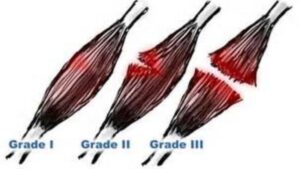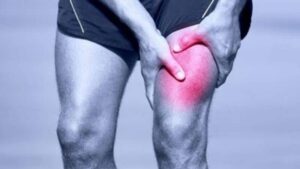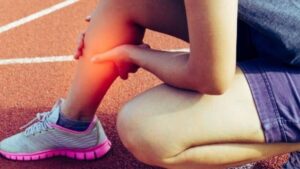Muscle strain or muscle pull is very common but a painful injury that can be easily treated with the best treatments for pulled muscles that we will discuss in this blog.
It usually occurs in athletes or sportspersons who frequently put pressure on muscles.
However, it may occur in you if you put pressure on muscles while doing regular activities like heavy lifting, running, and so on.
Generally, muscle strains occur due to two causes; either muscle stretch beyond limits or contract too strongly.
In mild cases, only a few muscles are pulled or strained. In contrast, severe cases serve non-functional and torn muscles.
Therefore, this blog will discuss the 6 best ways to treat pulled muscles.
But before that, let’s discuss muscle pull, symptoms, causes, and more.
So, let’s get through it.
What is a muscle strain?
A muscle strain is a result of overstretching or tearing of muscle fibres.
It can occur in any body muscle but usually in the lower back, shoulders, hamstring, and neck.
These muscle pulls or strains can cause severe pain and may limit your affected muscle movements.
As muscle strains are common, mild ones can be treated at home, but severe ones need some medical treatment by professionals or doctors.
However, doctors have classified pulled muscle into three grades for better treatment.
Grades of Muscle Strain or Pulled Muscle

According to Harvard Medical School, to simplify the best medical treatment for pulled muscles, doctors classify muscle strain or muscle pull in three grades:
Grade I strain: It is the case of a mild strain in which a few muscle fibres are strained or pulled. Although it is painful, it has general strength.
Grade II strain: It is the case of moderate strain in which a greater number of muscle fibres get pulled or torn, and you feel severe pain.
You will also notice mild swelling, loss of strength in a pulled muscle, and sometimes a bruise.
Grade III strain: It is a severe case of muscle strain or muscle pull in which muscle tears into two separate pieces or shears off from the tendon. In addition, it also causes a complete loss of muscle function.
In addition, you will also feel too much pain and notice considerable swelling, tenderness, and discoloration.
Thus, grade III strain is a serious issue, and you must consult a doctor for the best treatments for pulled muscles.
Certainly, muscle pull risk is usually high during heavy lifting, and while playing contact sports like football, basketball, etc. (not needed)
But how can you conclude muscle pain as many mild injuries happen during sports and athletic activities?
For that, let’s discuss the symptoms of pulled muscle or muscle strain.
Symptoms of Muscle Strain
Muscle strain or pulled muscles cause a variety of painful symptoms, including:
- Discoloration or bruise in muscle.
- Swelling in muscle.
- Muscle spasms or cramps.
- Decrease in muscle strain (Grade II strain).
- Complete loss of function (Grade III strain).
- A “pop” sensation.
- Stiffness of muscle.
- Weakness in muscles.
Earlier, we have seen the three grades of muscle pull or muscle strain, and after knowing the symptoms, you may conclude the grade of muscle strain on your own.
So, now let’s head to the causes of muscle strain or muscle pull.
Causes of Muscle Strain

A mild muscle strain or muscle pull can occur due to sudden and unexpected muscle tears. And those tears may occur from muscle trauma or injury.
This can happen due to:
- Performing physical activities without a proper warm-up.
- Poor flexibility.
- Poor conditioning.
- Overexertion and fatigue.
We have seen many misconceptions that only rigorous exercises and high-intensity workouts cause pulled muscle.
In fact, it is possible to have pulled muscles without doing anything.
There are some other possibilities to cause mildly pulled muscle, including:
- Jumping.
- Running.
- Kicking.
- Slipping.
- Walking.
Moreover, it is very common that you may also feel muscle strain in cold weather. This happens because muscles are stiffer in cold weather or lower temperature.
According to professionals, it is necessary to take extra time to warm up before any physical activity to prevent muscle strain.
Prolonged muscle strains are the results of frequent movements. This can be due to:
- Contact sports like basketball, football, and more.
- Bad body posture.
- Keeping your back and neck in a poor position for long. This happens with working at a desk.
- Sudden heavy lifting.
Hence, these are some common causes of muscle strain.
So, now you are familiar with the symptoms and causes of muscle strain, let’s see how doctors diagnose muscle strain.
Diagnosis of Muscle Strain
As we have seen the grades of muscle strain, the need for diagnosis is generally for grade III strain and rarely for grade II strain.
However, the grade I strain doesn’t need to diagnose as it can be treated with the best treatments for pulled muscles, like ice therapy or heat for a pulled muscle.
So, if the muscle strain needs to be diagnosed, the diagnosis of muscle strain will usually be based on the medical condition and history of the patient.
During diagnosis, if the doctor suspects any muscle pull, he will perform some physical examinations.
In addition, the doctor may ask the patient about the symptoms and history of muscle strains or may also ask about the cause.
If the doctor doesn’t get a complete idea of muscle strain after performing a physical examination, he will use some imaging test to get clear thoughts on muscle strain.
The imaging tests may include:
Ultrasound: The doctor can check for any tear or fluid build-up around the pulled muscle or strained muscle.
X-Ray: This shows if your bone is damaged or not.
MRI: It will help the doctor to check for any blood clots or internal bleeding.
Moreover, through these tests, doctors can also check for damages to other tissues like the tendons or the ligaments.
So, now the muscle strains are diagnosed, let’s see the best ways to treat pulled muscles.
6 Treatments of Muscle Strain

Grade I muscle strain can usually treat at home with some best remedies for pulled muscles.
According to research, mild muscle strain (Grade I strain or some Grade II strain) can be treated by RICE (Rest, Ice, Compression, and Elevation) formula.
But in a few cases, the pain is too much.
Keeping that in mind, this blog is sharing the 6 best treatments for pulled muscles, including:
1] Rest
If you suffer from muscle pain, you should avoid using the affected muscle for a few days, especially if the movement causes more pain.
But you should be careful as too much Rest can cause your muscles to become weak, and this can increase the healing time.
So, professionals recommend beginning the use of affected muscles slowly and be careful to not overdo it.
Moreover, taking proper Rest is one of the best ways to treat pulled muscles or muscle strain.
2] Ice
The best time to apply ice to the injured or strained muscle is immediately after the straining or injury of the muscle.
However, it will help you minimize a pulled muscle’s swelling.
But always remember not to put ice directly on your skin; instead, use ice packs or wrap some ice cubes in a towel or some cloth.
According to professionals, you should keep the ice on strained muscle for at least twenty minutes and repeat every hour for the first day.
However, for the next several days, you can apply ice to your pulled muscle at intervals of four hours.
Moreover, applying ice on pulled muscles just after the injury to reduce swelling is one of the best remedies for pulled muscles.
3] Compression
Compression is also effective in decreasing or stopping swelling around the pulled or strained muscle.
So, to decrease or stop swelling, compress the affected muscle with an elastic bandage until the swelling decreases or stops.
However, be careful while wrapping the affected muscle, as it may hinder blood circulation.
It will be better to loosen the wrap or compression if you feel any increment in pain.
4] Elevation
According to the professional, keeping the strained or pulled muscle above the heart level can be beneficial for healing.
But don’t force anybody part to do so.
Thus, these treatments are associated with the RICE (Rest, Ice, Compression, and Elevation) formula.
In addition, there are some more best remedies for pulled muscles that your doctor may suggest to reduce pain and swelling. And they are:
5] Heat
After the reduction of swelling, you can apply heat therapy to reduce the pain of pulled or strained muscle.
Along with that, it may also help to loosen your tight muscle and boost blood circulation around the strained muscle.
This can provide you with temporary relief and may increase the healing process.
According to the doctor, you should apply heat therapy through Electric hot pads, warm baths or hot tubs, hot cloths, and more.
But always be careful while applying heat therapy; for instance, don’t apply heat directly to your skin and immediately after the injury.
Earlier, we have mentioned ice therapy for muscle strain and heat therapy, so you can alternate them to get a better result.
6] Medication
Pulled muscles are quite painful and take time to recover. And if you suffer from grade III strain, it also impacts your daily/regular activities.
So, to relieve pain and swelling, doctors may recommend you some nonsteroidal anti-inflammatory drug (NSAID) or acetaminophen.
Some of the best painkillers for pulled muscles are naproxen or ibuprofen. They can help you get temporary relief from pain.
In fact, some of the best medicines to reduce swelling of pulled muscles are Advil, Motrin, and others.
Some people just ask, how to heal a pulled muscle in the back?
So, the answer is the same. Use the 6 best treatments for pulled muscles that we have mentioned above.
However, if you don’t feel relaxed after taking some NSAIDs or acetaminophen, your doctor may prescribe you some other pain medications or muscle relaxants.
Hence, these are the best treatments for pulled muscles in grades I and II.
But what if someone suffers from grade III strain (severe muscle strain)?
You must consult the doctor if you suffer from grade III or severe muscle strain.
After proper diagnosis, the doctor will suggest to you the best remedies for pulled muscles.
So, how can you feel that it’s time to consult a doctor?
Therefore, this blog will discuss when to consult a doctor in the coming section.
When to Consult a Doctor

Mild muscle strains (Grade I and Grade II) may heal quickly on their own or by applying the best ways to treat pulled muscles.
On the other hand, severe muscle strains (grade III strain) require a complete medical treatment or a rehabilitation program in a doctor’s vision.
So, now, let’s see when you should consult a doctor for muscle strains if:
- It feels or hears a little “pop” sound at the time of injury.
- When you feel serve pain, swelling, and discoloration in the strained muscle.
- You feel difficulty in moving or loss of movement in your pulled muscle.
- Mild muscle strain doesn’t subside in a week.
- The strained muscle bleeds.
- You can’t be able to perform any regular task even after 48 hours.
Hence, these are some points where you should consult a doctor to prevent any other problem.
After doing the diagnosis process, doctors will suggest you the best treatments for pulled muscles.
Conclusion
Muscle strain or muscle pull is severely painful and can stop you from doing your regular/daily activities.
It is very common among athletes and sports people, especially those who play contact sports like football, basketball, etc.
In addition, it is also common in people who do heavy exercises or intense workouts.
Therefore, it is necessary to heal a pulled muscle ASAP so that you can get back to work.
Moreover, muscle strain usually occurs due to two reasons; overstretching of muscle or contracting muscles strongly.
Doctors have classified muscle strain into three grades, Grade I (Mild Muscle strain), grade II (Moderate Muscle Strain), and Grade III (Severe Muscle strain), depending upon the severity of muscle fibers.
Grade I and Grade II can be treated using the 6 best treatments for pulled muscles, including:
- Rest.
- Ice.
- Compression.
- Elevation.
- Heat.
- Medication.
Certainly, the grade III (Severe strain) needs to be properly diagnosed and then medically treated by a doctor.
So, if you notice all the symptoms mentioned above, you must consult the doctor.
